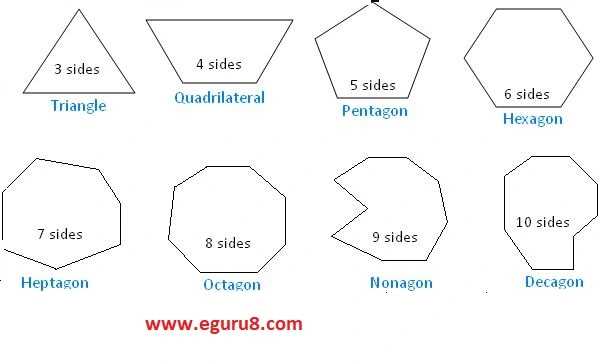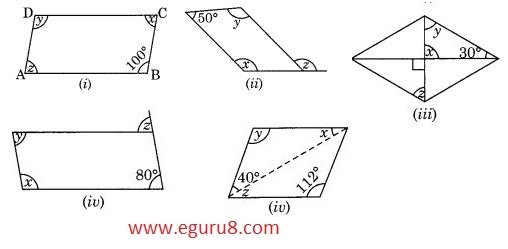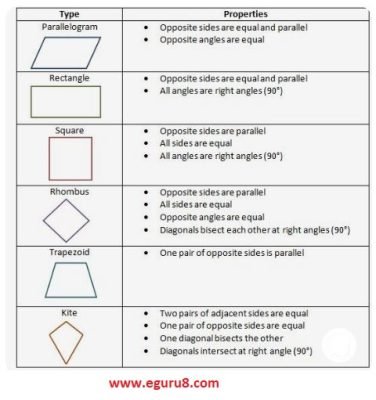NCERT Solutions Class 8 Maths Chapter 3 Understanding Quadrilaterals
Introduction :
In this chapter you come to know about polygons. A simple curved made up of only line segments is called polygon. Polygons are classified according to the number of sides or vertices they have.
A diagonal is a line segment connecting two non- consecutive vertices of a polygon. There are two types of polygons named convex and concave polygons.

NCERT Class 8 Maths Chapter 3 Understanding Quadrilaterals :
- Class 8 Maths Chapter 3 Understanding Quadrilaterals Exercise 3.1
- Class 8 Maths Chapter 3 Understanding Quadrilaterals Exercise 3.2
- Class 8 Maths Chapter 3 Understanding Quadrilaterals Exercise 3.3
- Class 8 Maths Chapter 3 Understanding Quadrilaterals Exercise 3.4
NCERT Solutions Class 8 Maths Chapter 3 Understanding Quadrilaterals Exercise 3.1
In this exercise 3.1 we will learn about polygons like different types of polygons.

NCERT Solutions Class 8 Maths Chapter 3 Understanding Quadrilaterals Exercise 3.2
In this Exercise 3.2, you will come to know about different types of polygons. a polygon is a plane figure enclosed by the line segment called sides. there are different types of polygon namely according to the number of line segments that is triangle which have three sides, while quadrilateral has four sides and pentagon has five sides and so on.

NCERT Solutions Class 8 Maths Chapter 3 Understanding Quadrilaterals Exercise 3.3
In this Exercise 3.3,understanding quadrilaterals, you will come to know about the properties of angles of a parallelogram.
• The opposite angles of a parallelogram are of equal measure.
• The adjacent angles in a parallelogram are supplementary.
The diagonals of a parallelogram, in general are not of equal length. However, the diagonals of a parallelogram have an interesting property i.e the diagonals of a parallelogram bisect each other.

NCERT Solutions Class 8 Maths Chapter 3 Understanding Quadrilaterals Exercise 3.4
In the Exercise 3.4 Understanding Quadrilaterals you will come to know about the some special parallelograms like rhombus, square and rectangle.
Rhombus: Rhombus is a quadrilateral with sides of equal length. The most useful property of rhombus is that the diagonals of a rhombus are perpendicular bisectors of one another.
Rectangle: A rectangle is a parallelogram with equal angles. Being a parallelogram, the rectangle has opposite sides of equal length and its diagonal bisect each other.
Square: A square is a rectangle with equal sides. A square has all the properties of a rectangle with an additional requirement that all the sides have equal length. The diagonals of a square are perpendicular bisectors of each other.

NCERT Class 8 Maths Chapter 3 Understanding Quadrilaterals :
- Class 8 Maths Chapter 3 Understanding Quadrilaterals Exercise 3.1
- Class 8 Maths Chapter 3 Understanding Quadrilaterals Exercise 3.2
- Class 8 Maths Chapter 3 Understanding Quadrilaterals Exercise 3.3
- Class 8 Maths Chapter 3 Understanding Quadrilaterals Exercise 3.4